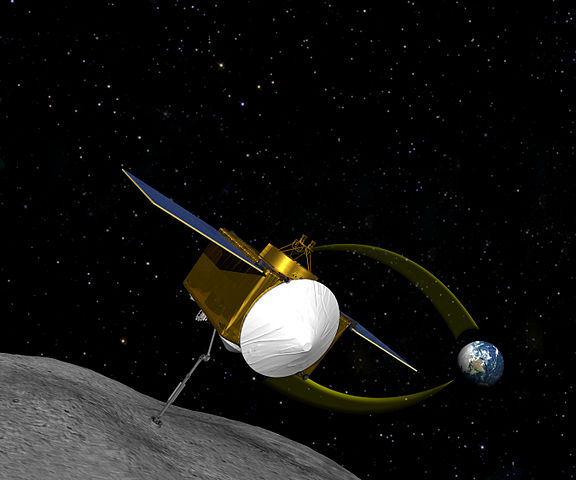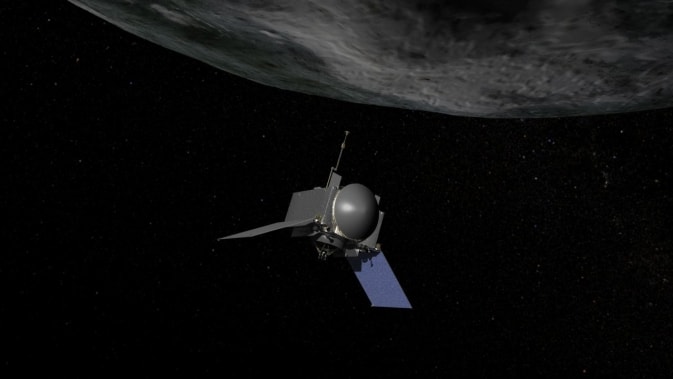Today, the launch window opens for the OSIRIS-REx probe. Whether or not the weather permits it to launch today at 7:05 pm EST or very soon afterward, this probe's mission is a cool one. It is heading toward 101955 Bennu (just Bennu, for short), a near-Earth asteroid found in the Apollo group. This is a group of asteroids mainly found around the orbits of Earth and Venus.
And what makes Bennu interesting? Interesting enough for a visit from our buddy OSIRIS-REx, that is? Well, as with many asteroids, it represents a chance to look "back into time"—its surface will have been fairly undisturbed since the time when it was first formed, billions of years ago. But even more important... reaching it requires a low delta-v!
*cough* Come again?
Easy, peasy, astro-squeezy
The Atlas-V rocket that will carry OSIRIS-REx into space awaits launch at Cape Canaveral, Florida on September 7th. (Getty Embed)
Don't worry. We were like, "What's a low delta-v?" too. (This why scientists at places like NASA are the ones planning space missions, not us!) But joking aside, delta-v refers to the amount of force needed to perform a maneuver around, off, or on a body in space. In this case? Bennu is a lot easier for a probe to land on than other asteroids. This makes it a perfect specimen for a mission like this. Because let's be honest. We're talking about sending a probe into space at about 40,000 km/h (25,000 mph) and having it land perfectly on something that is only the width of five football fields... and that something is, of course, moving super fast as well.
So NASA will take any advantage that it can get! And it turns out that the angle, speed, and distance of Bennu's orbit make it a great fit for this mission.
Smash and grab

OSIRIS-REx will use an extension to collect a sample of Bennu's surface. (NASA)
Just so we're not misunderstood, OSIRIS-REx won't actually be fully landing on Bennu. After it spends months orbiting and mapping the asteroid completely, it will use its thrusters to very slowly hover down toward Bennu's surface. Then it will lower an arm extension, which will touch the surface and release a powerful burst of nitrogen gas. This controlled explosion will break loose tiny pieces of Bennu. These pieces will then be sucked up and stored inside a capsule on the probe. The entire mission will take about seven years, with the capsule returning in the year 2023.
One last thing. The final weight of the sample should be about 60 grams (2.1 oz). That's about the weight of a snack-sized bag of chips. So don't be too bummed if the people at NASA don't want to share. Watch the video to learn some more!
 This is what an artist thinks it will look like in 2019 when the OSIRIS-REx probe first reaches the asteroid Bennu. Here's hoping that it all goes this smoothly! (NASA)
This is what an artist thinks it will look like in 2019 when the OSIRIS-REx probe first reaches the asteroid Bennu. Here's hoping that it all goes this smoothly! (NASA)










BESTTTTTTTTTTTTTTTTTTTTTTTTTTTTTTTTTTTTTTTTTTTTTTTTTTTTTTTTTTTTTTTTTTTTTTTTTTTTTTTTTTTTTTT